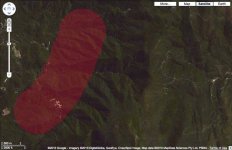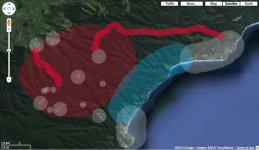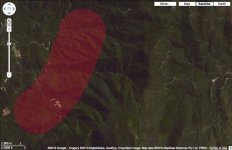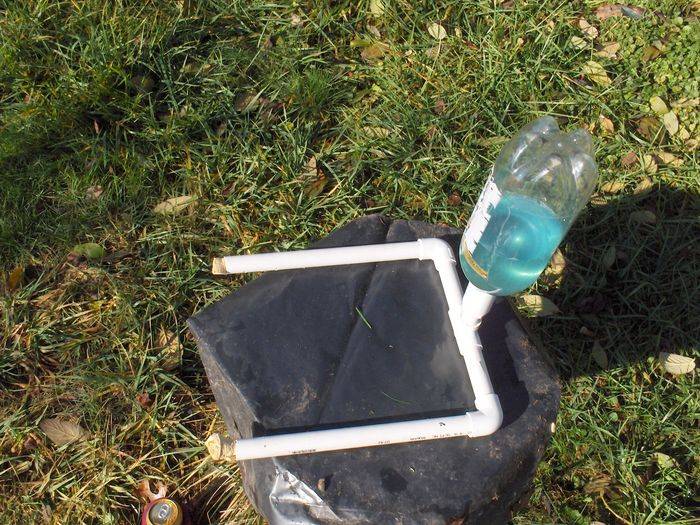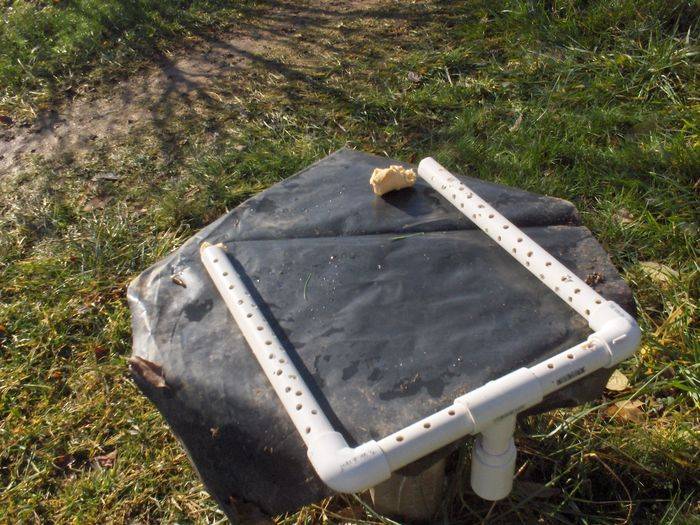hey all, i wrote this up today/tonight as it was a topic i wanted to learn more about and the best way to do so is to research the shit out of it, think about everything you've just learned and put it on paper! so voila, i'm pretty much done. please feel free to critique it and add in any other ideas or knowledge you have on the subject, that would be much appreciated.
I will add to this and change parts as I learn more in the future.
******************************************************
The term “Guerilla Growing” was first used in the 1970s and requires a great deal of strategy, time, patience and quite often physical ability. Depending where you live and the laws of that area, this form of growing in remote locations may be the only option available to you. Location and security are two main issues when choosing a location for growing. So choosing a place with limited access by the public is a must.
Looking for a location!
Google maps (satellite) is definitely a useful tool when looking for great locations to create a growing area. Look for locations where there’s restricted road coverage and tracks, the less people that visit these areas the better. So also take note to keep them away from recreational areas that are often found out in these areas. Be sure to check information via the net or otherwise about local use of these areas whether it’s scouts, fishermen, hunters, hikers, bike riders, motor cyclists, 4wders, bird watchers, whomever. The more isolated the better.
Be sure to check the wind patterns for the area you plan on growing in. In the south of aus for example, most winds are from the south heading to the north. So it’s best to plant (if on the coast) a few kms inland away from these winds, and covered by mountains or forest etc. Windbreaks will protect your plant from wind damage, heat and water loss. So do your homework before choosing a site to get started. Also make sure the lighting will be right for your plants (I will discuss this more below).

This photo illustrates how coastal winds act in this area. Coastal winds tend to blow inland during the day creating cool zones shown by these light blue arrows. At night, coastal winds tend to blow from land out to sea. Valleys and exposed hillsides generally receive more wind. (click to enlarge)

This above photo is an example of finding a growing area near a coastline. (click to enlarge)
The light blue area shows the region closest to the coast that will receive temperature fluctuations as well as increased wind activity due to its proximity to the coastline. The white areas denote populated regions, the two major towns on the coast, middle bottom and top right corner, as well as a few smaller farms/homes dotted in the forest. The red lines denote sections of main roads. The red area shows where the region with less wind activity and temperature fluctuation, as it’s further inland away from the coast line by ~2km. It’s well protected as it’s located on the opposite side of the mountains lining the coast.
The location should be selected and prepared up to 6 months in advance to when you plan on planting your grow (spring time most often). So work out where you want to plant that is convenient to you, look for the closest but most secluded/protected spot. You want it to be as close to you as possibly obviously, but also secluded enough that it will go unnoticed by thieves or the law, etc. So be smart about it, don’t just jump your neighbours fence and plant some of your finest strains in their veggie patch.
Wind/Weather Links for Australia
- http://www.ozwind.com.au/
- http://www.bom.gov.au/
- http://www.bom.gov.au/climate/averages/wind/wrselect.shtml
- http://www.bom.gov.au/climate/averages/maps.shtml

This is a "wind rose" for melbourne australia, a city located on the south east coast. It shows that the majority of winds move from the south to the north and are thus "southerly" winds (originating from the south).
this link will give you a map of Australia where you can click on specific cities to get their individual wind roses! very handy indeed! http://www.bom.gov.au/climate/averages/wind/selection_map.shtml

you can also get tables of climatic averages for hundreds of locations all over Australia. http://www.bom.gov.au/climate/averages/ just click this link then select your state and then town where you'll be growing close to and voila, average temps, winds (for 9am and 3pm times of day), humidity, rainfall etc for all months of the year! definitely worth a look if you're serious about getting the perfect grow location.
here's an example - Campbeltown in NSW

I will add to this and change parts as I learn more in the future.
******************************************************
The term “Guerilla Growing” was first used in the 1970s and requires a great deal of strategy, time, patience and quite often physical ability. Depending where you live and the laws of that area, this form of growing in remote locations may be the only option available to you. Location and security are two main issues when choosing a location for growing. So choosing a place with limited access by the public is a must.
Looking for a location!
Google maps (satellite) is definitely a useful tool when looking for great locations to create a growing area. Look for locations where there’s restricted road coverage and tracks, the less people that visit these areas the better. So also take note to keep them away from recreational areas that are often found out in these areas. Be sure to check information via the net or otherwise about local use of these areas whether it’s scouts, fishermen, hunters, hikers, bike riders, motor cyclists, 4wders, bird watchers, whomever. The more isolated the better.
Be sure to check the wind patterns for the area you plan on growing in. In the south of aus for example, most winds are from the south heading to the north. So it’s best to plant (if on the coast) a few kms inland away from these winds, and covered by mountains or forest etc. Windbreaks will protect your plant from wind damage, heat and water loss. So do your homework before choosing a site to get started. Also make sure the lighting will be right for your plants (I will discuss this more below).
This photo illustrates how coastal winds act in this area. Coastal winds tend to blow inland during the day creating cool zones shown by these light blue arrows. At night, coastal winds tend to blow from land out to sea. Valleys and exposed hillsides generally receive more wind. (click to enlarge)
This above photo is an example of finding a growing area near a coastline. (click to enlarge)
The light blue area shows the region closest to the coast that will receive temperature fluctuations as well as increased wind activity due to its proximity to the coastline. The white areas denote populated regions, the two major towns on the coast, middle bottom and top right corner, as well as a few smaller farms/homes dotted in the forest. The red lines denote sections of main roads. The red area shows where the region with less wind activity and temperature fluctuation, as it’s further inland away from the coast line by ~2km. It’s well protected as it’s located on the opposite side of the mountains lining the coast.
The location should be selected and prepared up to 6 months in advance to when you plan on planting your grow (spring time most often). So work out where you want to plant that is convenient to you, look for the closest but most secluded/protected spot. You want it to be as close to you as possibly obviously, but also secluded enough that it will go unnoticed by thieves or the law, etc. So be smart about it, don’t just jump your neighbours fence and plant some of your finest strains in their veggie patch.
Wind/Weather Links for Australia
- http://www.ozwind.com.au/
- http://www.bom.gov.au/
- http://www.bom.gov.au/climate/averages/wind/wrselect.shtml
- http://www.bom.gov.au/climate/averages/maps.shtml

This is a "wind rose" for melbourne australia, a city located on the south east coast. It shows that the majority of winds move from the south to the north and are thus "southerly" winds (originating from the south).
this link will give you a map of Australia where you can click on specific cities to get their individual wind roses! very handy indeed! http://www.bom.gov.au/climate/averages/wind/selection_map.shtml

you can also get tables of climatic averages for hundreds of locations all over Australia. http://www.bom.gov.au/climate/averages/ just click this link then select your state and then town where you'll be growing close to and voila, average temps, winds (for 9am and 3pm times of day), humidity, rainfall etc for all months of the year! definitely worth a look if you're serious about getting the perfect grow location.
here's an example - Campbeltown in NSW

